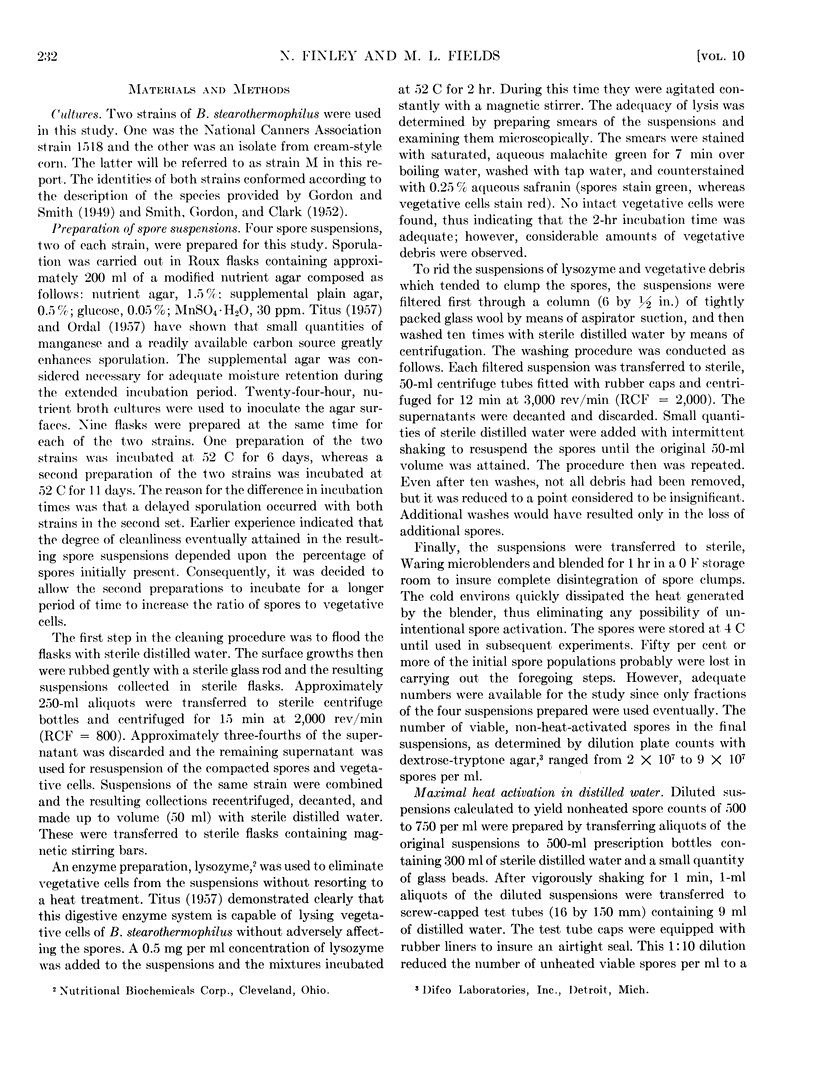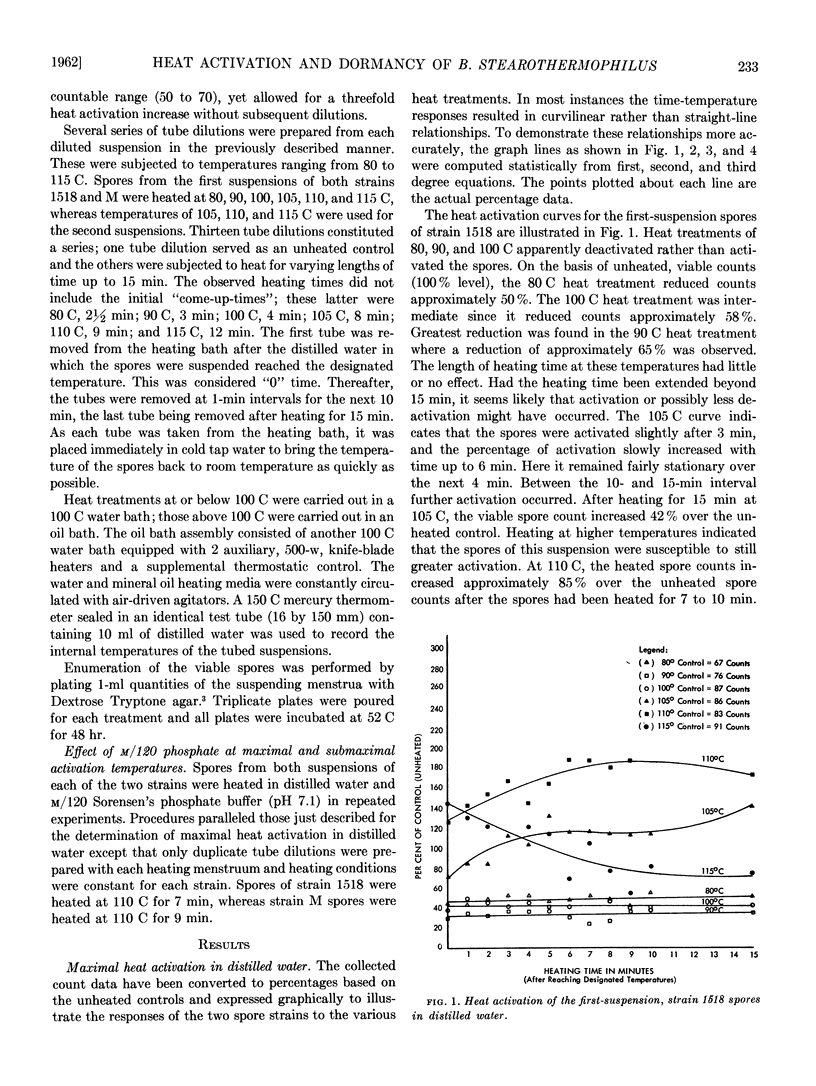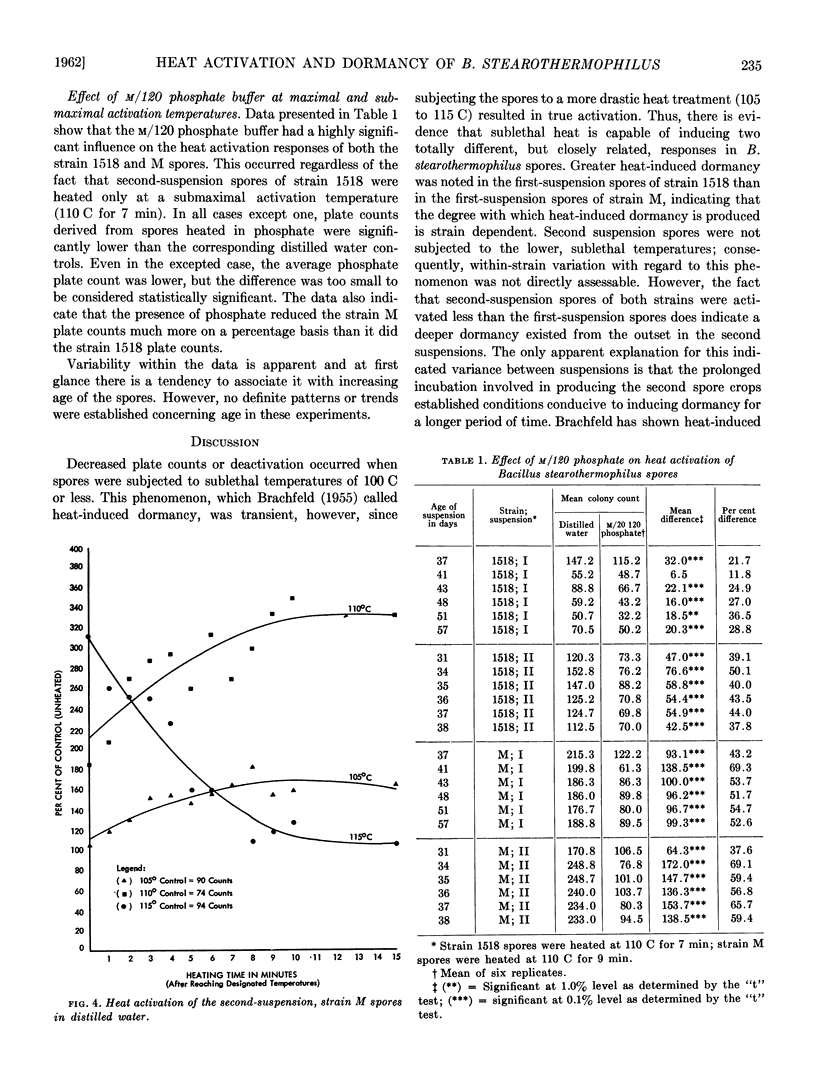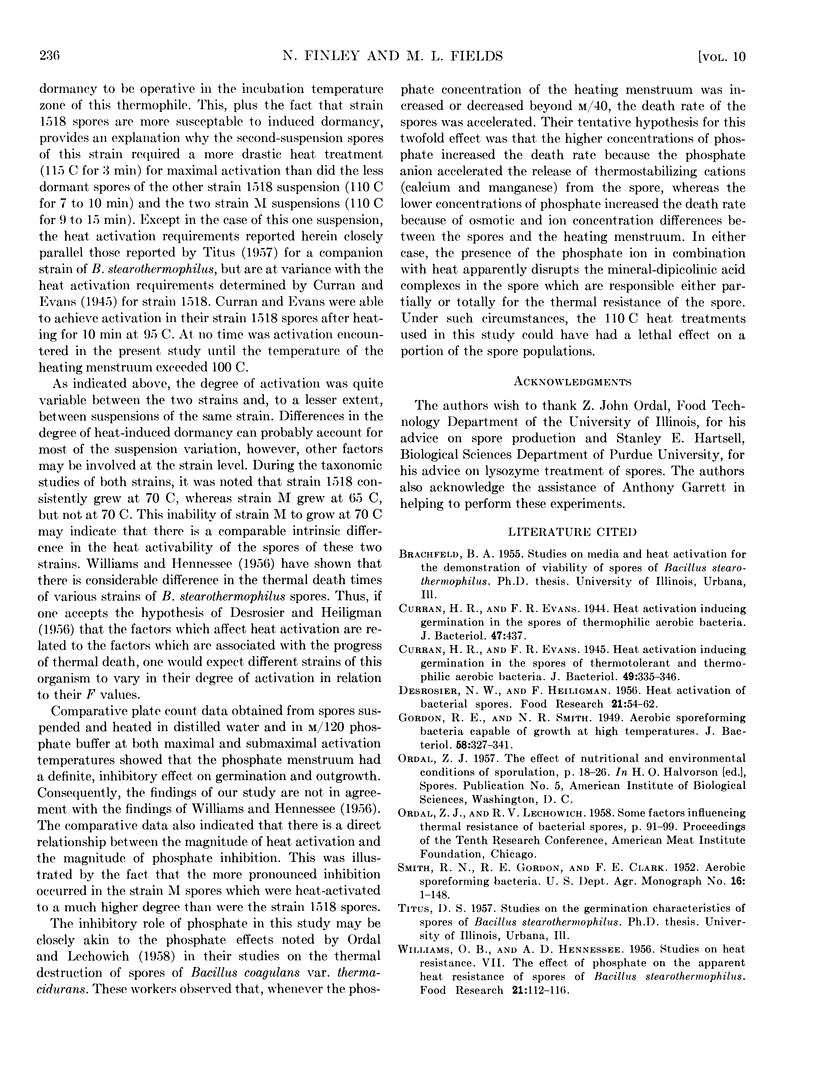Abstract
Heat-induced dormancy was observed when spores of two strains of Bacillus stearothermophilus were heated in distilled water at 80, 90, and 100 C. At temperatures above 100 C, true activation occurred; however, maximal activation was not achieved until temperatures of 110 to 115 C were employed. A heat treatment of 115 C for 3 min was required to induce maximal activation in one suspension of strain 1518 spores, whereas a heat treatment of 110 C for 7 to 10 min was adequate for the other suspension of strain 1518 spores. Spores from both strain M suspensions required heat treatments of 110 C for 9 to 15 min for maximal activation. The degree to which the spores could be activated was strain dependent and variable among spore suspensions of the same strain.
The germination and outgrowth of all spores, regardless of strain and suspensions source, were significantly reduced when the spores were heated in m/120 phosphate buffer at maximal or near maximal activating temperatures. It was suspected that phosphate lowered the heat resistance of the spores to the extent that the heat treatments were lethal to a portion of the populations.
Full text
PDF





Selected References
These references are in PubMed. This may not be the complete list of references from this article.
- Curran H. R., Evans F. R. Heat Activation Inducing Germination in the Spores of Thermotolerant and Thermophilic Aerobic Bacteria. J Bacteriol. 1945 Apr;49(4):335–346. doi: 10.1128/jb.49.4.335-346.1945. [DOI] [PMC free article] [PubMed] [Google Scholar]
- Gordon R. E., Smith N. R. AEROBIC SPOREFORMING BACTERIA CAPABLE OF GROWTH AT HIGH TEMPERATURES. J Bacteriol. 1949 Sep;58(3):327–341. doi: 10.1128/jb.58.3.327-341.1949. [DOI] [PMC free article] [PubMed] [Google Scholar]


